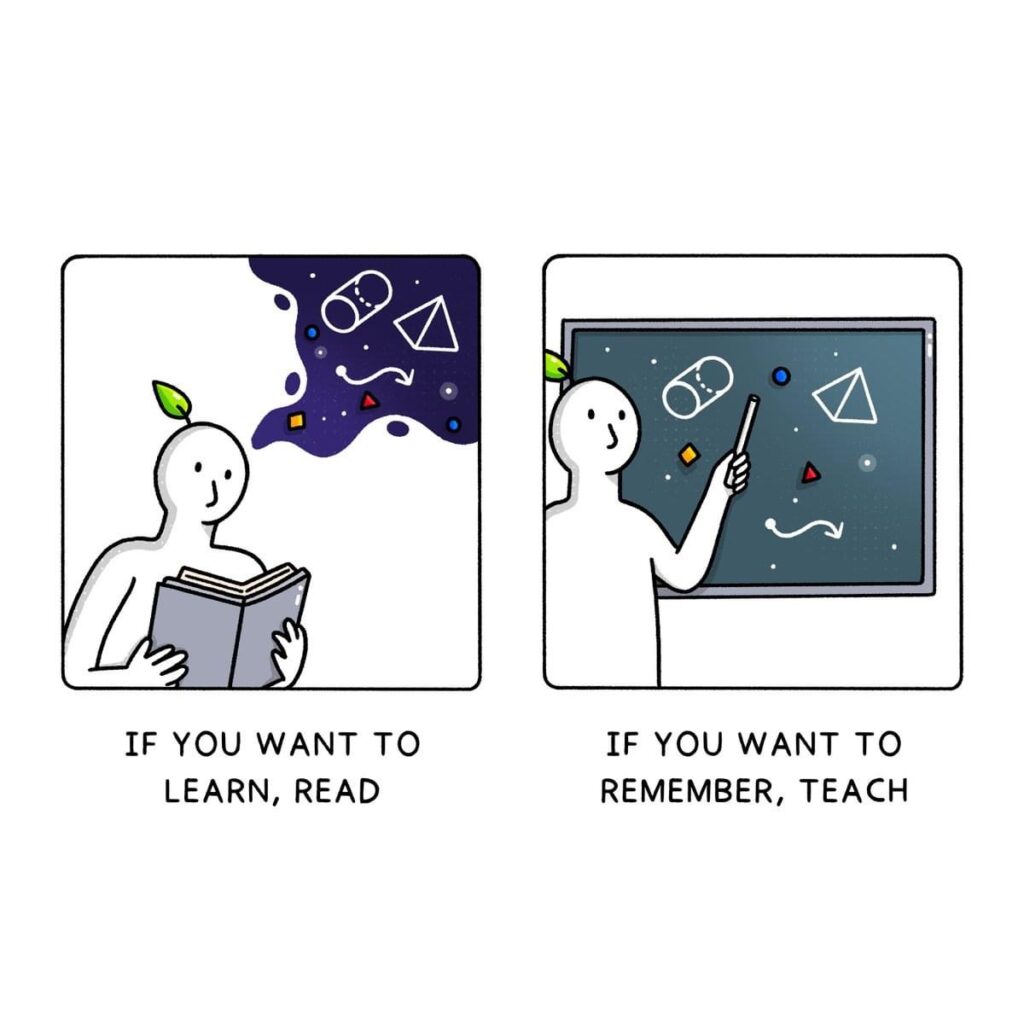
Learning is a fascinating journey, and our ability to acquire and retain knowledge plays a crucial role in our personal and professional development. There’s a simple yet profound saying that encapsulates two essential aspects of this process: “If you want to learn, read; if you want to remember, teach.” In this article, we’ll explore this wisdom and discover how reading and teaching are the key to unlocking your learning potential.
1. Learning through Reading
Imagine you’re on a quest for knowledge. You want to explore new horizons, understand complex concepts, and discover the wisdom of others. Where do you begin? The answer is simple: start by reading.
Reading is Learning: When you read, you open the door to a world of information. Whether you’re flipping through the pages of a book, scanning articles online, or delving into research papers, reading is your gateway to learning. It allows you to absorb insights, grasp ideas, and gain expertise on a wide range of topics.
Expanding Your Horizons: Reading introduces you to different perspectives and viewpoints. It exposes you to the thoughts and experiences of authors, experts, and thinkers from various fields. This exposure broadens your understanding and enriches your knowledge base.
Passive Learning: Reading is often considered a passive form of learning because it involves absorbing information. It’s an excellent way to get started on your learning journey and lay the foundation for more active forms of engagement.
2. Remembering through Teaching
Now, let’s shift our focus to the second part of the saying: “if you want to remember, teach.” Once you’ve acquired knowledge through reading, the next step is to ensure you retain it effectively.
Teaching is Remembering: When you teach someone else what you’ve learned, you embark on a powerful journey of reinforcement. Teaching forces you to revisit and consolidate your understanding of the material. It’s like cementing the knowledge in your memory.
Active Engagement: Teaching is an active form of learning. It requires you to explain concepts, answer questions, and share your insights with others. This process of actively engaging with the material enhances your comprehension and retention.
Organizing Your Thoughts: Teaching necessitates organizing your thoughts and ideas. You must structure the information coherently to convey it effectively to others. This organization deepens your own understanding and helps you make meaningful connections within the subject matter.
The Learning Cycle: Read and Teach
So, how do reading and teaching work together in the learning process? They form a beautiful cycle:
- Read: Start by immersing yourself in books, articles, or any written material related to your area of interest. Reading is the initial step in acquiring knowledge.
- Learn: As you read, you absorb new information and ideas, expanding your knowledge and perspectives.
- Teach: Share what you’ve learned with others. Whether it’s explaining a concept to a friend, writing a blog post, or giving a presentation, teaching reinforces your understanding.
- Remember: Through teaching, you cement the knowledge in your memory. Your active engagement with the material solidifies your grasp on it.
- Repeat: Continue this cycle as you delve deeper into your chosen subjects. With each iteration, your understanding and retention will improve.
In conclusion, the saying “if you want to learn, read; if you want to remember, teach” serves as a reminder of the symbiotic relationship between acquiring and retaining knowledge. Reading is your pathway to learning, while teaching is your method for remembering and mastering what you’ve learned. By embracing both aspects of this wisdom, you can unlock your full learning potential and embark on a lifelong journey of discovery and growth.

